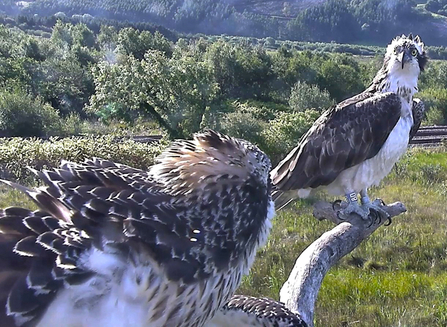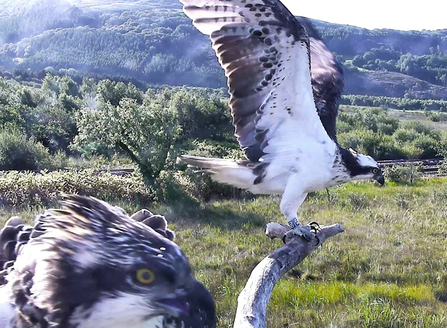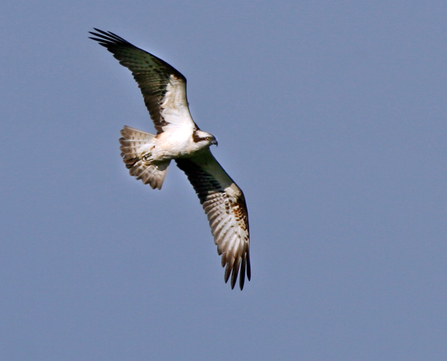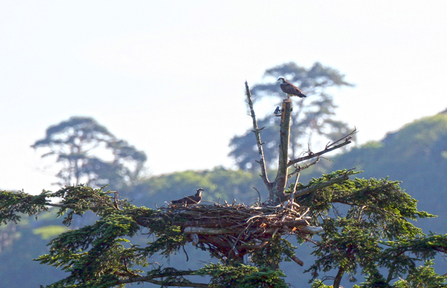We had an intruder osprey visitor yesterday - and we could ID him. Finally!
Since her valiant battles with Blue 24 in April, Glesni has defended her regained nest with stoicism and determination. She has kept a constant 24-hour vigil over everything around her - until yesterday.
Blue 80






